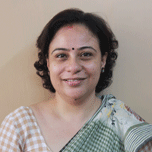Child marriage in Bihar: The role of insecurity and migration
According to the recent National Family Health Survey (NFHS-4, 2015-16) data, 39.1% of women in India within the age-group of 20-24 years are married before 18 years. In Bihar, the problem is much more acute with 42.5% of the girls in this age group having been married before 18. Though over the years the situation has improved in the state, some worrying statistics show that districts like Supaul accounted for more than 56% of girl child marriage, while Begusarai (53.2%), Jamui (50.8%), Samastipur (49.6%) and Gaya (47.6%) closely followed.
Given this backdrop, this project seeks to understand child marriage in Bihar with a special focus on the effect of two other pressing issues of the state: women security (or the lack of it) and migration. This study is an attempt to understand the drivers of this social malaise, namely widespread underage marriage, in light of the recently launched Kanya Uthyan Yojana and the Mukhya Mantri Kanya Vivah Yojana introduced in 2007.
The researchers aim to use both primary and secondary data. The NFHS 4 and DLHS4 data will be used to determine the cost of child marriage and to consider the reasons behind it in Bihar. The study aims to throw light on the following questions:
- What role do the following play in underage marriage in the three countries?
- What is the role of the demand for underage brides?
- What is needed to bring about a social change regarding the age of marriage?
An understanding of the reasons behind child marriage and the impact of the Mukhya Mantri Kanya Vivah Yojana, launched a decade ago, would help predict the effectiveness of the newly launched Kanya Uthyan Yojana and recommend appropriate and targeted policy interventions.



